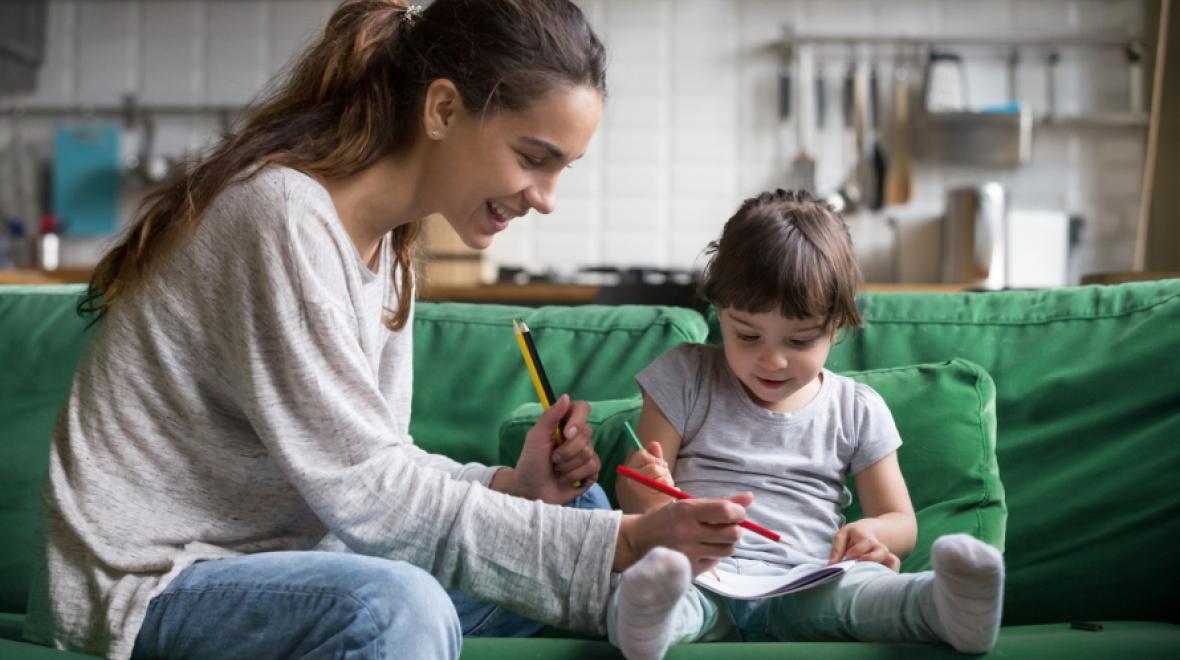
Editor's note: This article was sponsored by Seattle Children's Hospital.
As parents emerge from pandemic date-night hiatus, they may struggle to find experienced teenage babysitters. With so much isolation over the past few years, potential babysitters may have missed informal opportunities to try out caregiving with siblings, neighborhood children or extended family. At the same time, parents of teenagers may question if their children have the maturity, confidence and skills to babysit others.
Seattle Children’s Hospital’s class for nascent babysitters attempts to bridge these potential gaps, guiding new babysitters while also encouraging parental involvement in their teens’ new babysitting endeavors, says health educator Sarah Stempski, who teaches the Better Babysitters course.
Is my child ready to babysit?
There’s no universal rule for the best age to start babysitting. That’s why the Seattle Children’s class is designed for a range of emerging babysitters, ages 11–14.
Still, there are some signs parents can monitor to gauge whether their child might be ready, Stempski says. For one, they may start taking on a leadership role with younger children in their family, such as siblings or cousins. Parents may also notice their child intentionally playing at a younger level to engage small children. Other markers to evaluate: How comfortable does your child feel in someone else’s home? Have they taken on more responsibilities in their own home, such as doing the dishes or cooking simple meals?
In the Better Babysitters class, instructors ask students why they chose to take the class. While earning money is a valid reason, it’s also important that participants enjoy working with children.
If you’re unsure of some of these answers, encourage your child to try a parents’ helper role for shorter periods of time, Stempski advises.
How involved should the babysitter’s parents be?
Often, students start their babysitting journey with familiar folks: neighbors, extended family and family friends. If your child is working with a new family, a parent-to-parent conversation can be helpful to ensure values are aligned, such as levels of COVID-19 precautions or knowledge of and comfort with firearms in the home.
These conversations are also beneficial in ensuring that the family’s caregiving expectations are well matched to your young babysitter’s abilities.
Even after the relationship is established, parents still have an important role to play in guiding and coaching their young babysitter. That’s why Stempski tells the students that their parents are their No. 1 business partner.
What does the class teach?
Better Babysitters focuses on helping students understand basic child development, safety and injury prevention tips, age-appropriate toys and what parents expect. The class is currently divided into two two-hour virtual sessions, though organizers are hopeful in-person sessions will resume soon.
One benefit of the virtual 22-participant sessions has been the expanded geographic reach. Along with Seattle-area participants, students have attended from eastern Washington, Montana and Idaho.
While there are varying levels of previous babysitting experience, the goal is to meet the needs of emerging babysitters. Many will come to the class without any babysitting experience while some may have cared for younger siblings, cousins or neighbors.
“Sometimes, a sibling might be the hardest person you babysit,” Stempski notes, laughing. “When you babysit for other kids, you might be amazed how much they want to listen to you!”
Creating a positive experience
The class focuses on tools for working with children to create a positive experience, even if there’s a conflict. These include strategies such as using humor, distraction or working to find a win/win compromise. Students brainstorm solutions to difficult situations, such as a kid who demands four cookies instead of the allocated two. (One idea: Divide the two cookies in half!)
The class covers infant care, such as changing a diaper. While CPR for babysitters is a separate class, this course addresses common safety strategies, such as being mindful of a new walker who might take a tumble or applying sunscreen when necessary. Students will also learn about burn prevention, how to handle cuts and scrapes, and what to do if a child throws up or gets a nosebleed. They’ll discuss what to do if there’s an unexpected knock at the door, or when and how to call for emergency help.
Focusing on planning
The Better Babysitters class puts a big emphasis on planning ahead and developing skills that may be beneficial long after students’ babysitting days are over. Students can ask families to fill out a form with neighbor names and contact numbers as well as basic family information such as allergies. They can also be sure to ask in advance about house rules and any specific instructions, such as overseeing potty-training protocols and bedtime routines.
“They can have all of the information organized so they can feel prepared,” says Stempski. “You want to feel like: ‘I’ve got this.’”
Bringing on the babysitter magic
During one portion of the class, students work in pairs to brainstorm and then share activity ideas for a particular age group. A recent group suggested preschoolers might enjoy building a fort, dressing up or coloring.
“I appreciate how students are thinking creatively beyond screen time,” says Stempski. “And I love how students come up with reading for every age group.”
The class encourages students to create their own activity bag that comes and goes with the babysitter. This grab bag might include books, a craft, a game or figurines for imaginative play. They can reuse the items for different families with some tailoring for children’s ages and interests.
“There’s some magic in a babysitter bag,” says Stempski.
That magic can also come from babysitters sharing their own interests and hobbies. One student who loved anime drawings wanted to share that talent with her young clients. Another shared some cool soccer moves.
What to avoid
Instructors ask the class participants to recall characteristics of their own babysitters — the good and the bad. Students learn from sharing their experiences to avoid common problems, such as a babysitter who spent too much time on the phone. They might also share thoughts on respecting a family’s privacy, for instance, not taking any pictures for social media.
They’ll also discuss what may make a parent not want to invite them back, such as leaving a big mess. One babysitter shared a strategy for helping kids clean up, playing “the floor is lava” while returning toys to bins. The kids were so excited to show their parents the playroom floor, which was visible for the first time in two years, they told her.
Developing life skills
Throughout the course sessions, students discuss how they might find babysitting jobs and how to talk to a new family about appropriate pay. (One suggestion: Start with an hourly rate that matches your grade level, and then increase the rate as you gain more experience.)
Participants also discuss strategies for finding customers, starting with people their family already knows, such as neighbors or coworkers with younger children. When extending their reach beyond those communities, it’s important to keep safety in mind. Word-of-mouth recommendations from a trusted source make all parties feel more comfortable.
After the course, students are given take-home activities to role-play potentially uncomfortable situations, such as getting underpaid, parents coming home too late or something breaking.
Inspiring young babysitters
For those who are drawn to babysitting, it’s fun to see the enthusiasm surrounding this new opportunity, Stempski says. She remembers some participants who were so excited they took the class on their 11th birthday.
Sometimes, Stempski hears from previous students who are out in the community babysitting and feeling great about it. It’s reassuring that they have the skills, resources and family support they’ll need on their child-care adventures.
“It feels really great that they’re out babysitting in a safe way,” she says.
|
Sponsored by: |












